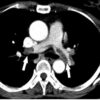Quick Byte: Telemental health visits on the rise
Telemental health visits are on the rise.
Researchers analyzed Medicare fee-for-service claims for the period 2004-2014 related to telemedicine used for mental health care, or “telemental health.” Their study population was rural beneficiaries with a diagnosis of any mental illness or serious mental illness. Over the years studied, the number of telemental health visits grew on average 45.1% annually.
In 2014, there were 5.3 and 11.8 telemental health visits per 100 rural beneficiaries with any mental illness or serious mental illness, respectively.
Reference
Mehrotra A, Huskamp HA, Souza J, et al. Rapid growth in mental health telemedicine use among rural Medicare beneficiaries, wide variation across states. Health Aff. 2017 May 1;36(5):909-17. Accessed May 24, 2017.










